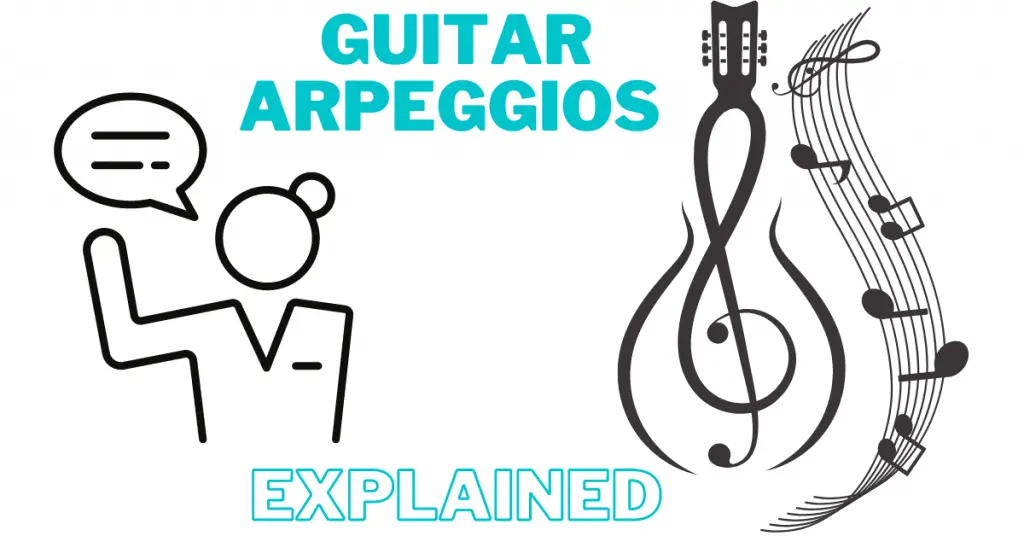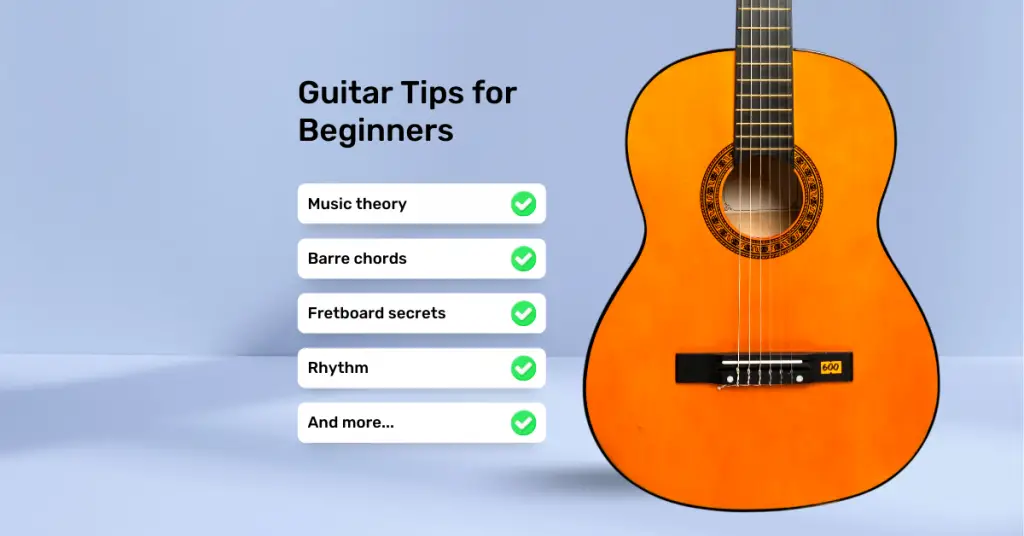Table of Contents
What is an arpeggio?
An arpeggio is a broken down chord. You simply take the notes from a chord and play them one at a a time.
What are guitar arpeggios used for?
There are multiple uses for arpeggios.
The term is usually first heard in relation to fingerstyle guitar. When used in fingerstyle, it’s called arpeggiating a chord. This is technically not a true arpeggio, though, because the notes ring out.
Aside from that, arpeggios are often used to play melodies. These melodies sometimes act as a lead part, and act as accompanying rhythms at other times.
My favorite way to use arpeggios is in shred guitar. You can play arpeggios extremely fast if you’re using the right shapes and techniques.
Guitar Arpeggios Video
Here’s my accompanying video lesson!
Scales and Arpeggios
You need to know the difference between scales and arpeggios before moving forward.
Scales are groups of organized notes based around a root. These notes repeat as you move from one octave to another.
Arpeggios are notes stacked together using chord formulas.
Scales are home to many different arpeggios. Arpeggios stand alone, and contain no other arpeggios in them, aside from inversions or dumbed down versions of themselves.
Should I learn scales or arpeggios first?
As a general rule you should learn scales before arpeggios.
Scales are your musical foundation, and understanding them and the harmony that exists in them will make arpeggios easier to learn.
Chords and arpeggios
You already know some arpeggios if you know chords! Take any chord shape you know, and play it one note at a time.
As long as the notes are independent, and don’t ring out, you’re playing an arpeggio.
You’ll remember arpeggios easily if you relate them back to chord shapes.
How do you practice guitar arpeggios?
Practicing guitar arpeggios is easiest to do using scales. Take any degree of your scale, and play every other note after that. This will get you a diatonic arpeggio.
Take your G Major scale for example.
The notes are: G – A – B – C – D – E – F#
Starting with G, play every other note in the scale. Start with triads.
The first triad you get is G-B-D. This makes up a G Major chord.
Move to the next degree of the scale, your A note. This builds the chord A-C-E, your A Minor chord.
Do this with every degree of the scale, and you’ll play the scale’s diatonic arpeggios.
Use this G Major 3-notes-per-string scale for reference.

Practice with familiar chords
You can also practice arpeggios by breaking down the chords you already know into single notes.
From there you can add new notes to these broken down chord shapes to create interesting arpeggios.
Ending with a root note
Always end with your root note, in this case G, when you’re first learning arpeggios.
This will help to you recognize and remember arpeggio shapes and sounds more easily.
Which arpeggios should I learn first?
As a whole you should learn triad arpeggios first. Do this with diatonic triad arpeggios from major scales, as shown before.
Use the G Major scale, for example. The diatonic triads in G Major are:
G Maj – A Min – B Min – C Maj – D Maj – E Min – F# Dim
Practice these using a variety of arpeggio shapes.
Arpeggio shapes
Arpeggio shapes are used to visualize and break down chords.
Even though guitar arpeggio shapes are popular, and I teach them regularly, it’s important to remember that arpeggios are just chords broken down into notes played one at a time.
This means you can play these notes anywhere, one at a time, and it will be an arpeggio.
Let’s use a single arpeggio to show what I’m talking about. We will use the G Major arpeggio. The notes in this arpeggio are G, B, and D.
Single String
Here I’ve laid out where G, B, and D are on each string.
Play the notes on each string.
Knowing where the notes of G Major are on each string allows you to play any type of G Major shape/arpeggio!
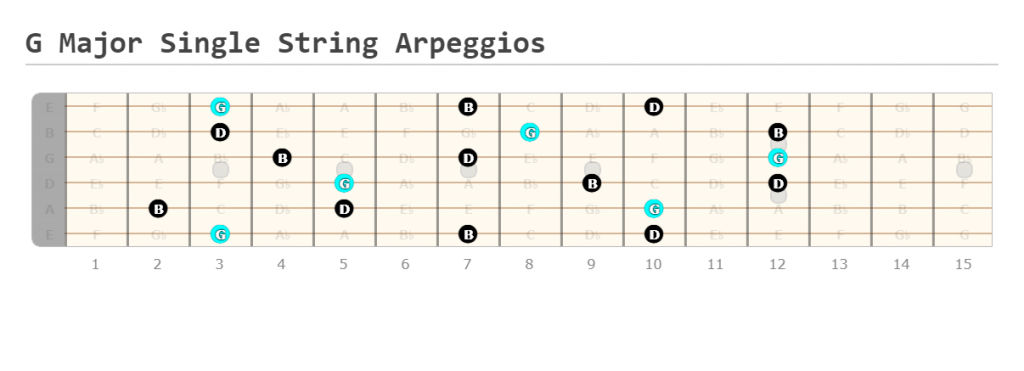
Octaves/2 string
You can easily move arpeggio shapes in octaves. Do this by finding a 2-string arpeggio, then move it to a new octave.
The chart below shows a G Major arpeggio in 3 different octaves using the exact same shape!
Practice the shape using your middle, index, and pinky fingers. Play it in your first octave, then play it in the next 2 octaves with the exact same finger positions.
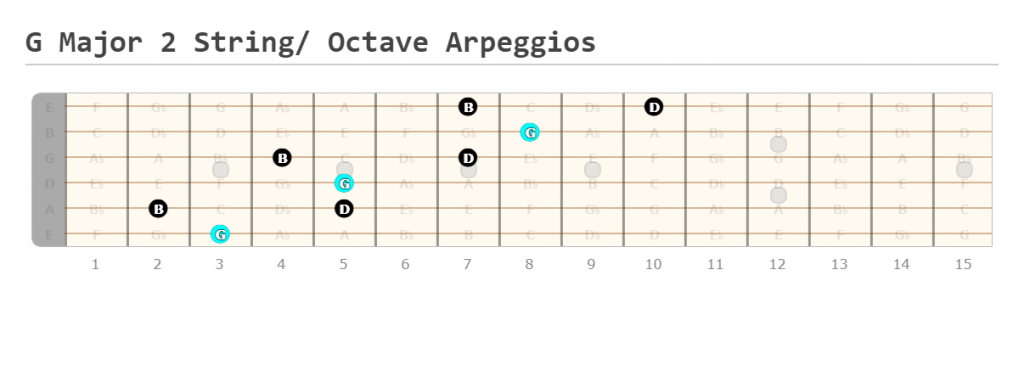
String skipping
String skipping is a lucrative way to easily access notes. This works especially well in higher octaves.
String skipped arpeggios are usually played as 2-notes-per-string. This means that they work well with hammer-ons and pull-offs. Hammer the notes on the way down, and pull-off notes on the way up!
Try moving this up an octave if you can. This usually works best on an electric guitar.
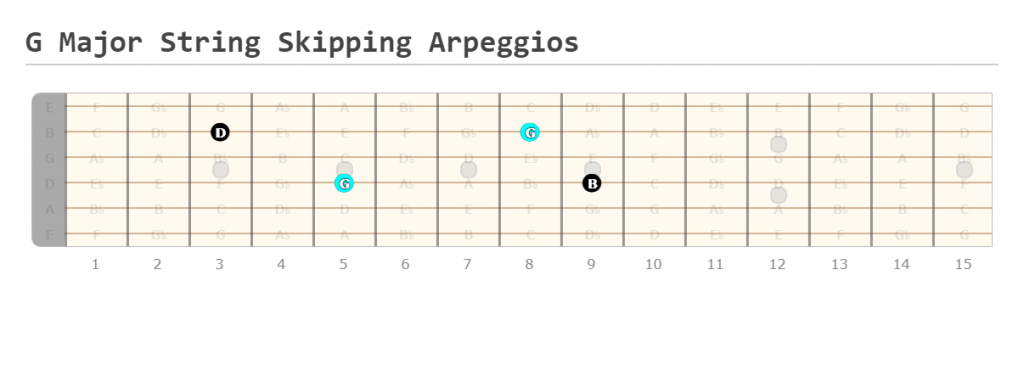
Paul Gilbert is an electric guitarist well-known for his string skipping abilities! Check him out.
5 CAGED Arpeggio Shapes
As a whole the guitar uses 5 open major chords to derive arpeggios from. These are the CAGED chords, which were likely your first chords as a beginner.
You can look at any arpeggio form on guitar and derive them from one of these 5 shapes.
For reference, here are the 5 Major CAGED chords and their 3 Minor counterparts.
Open Major CAGED chords


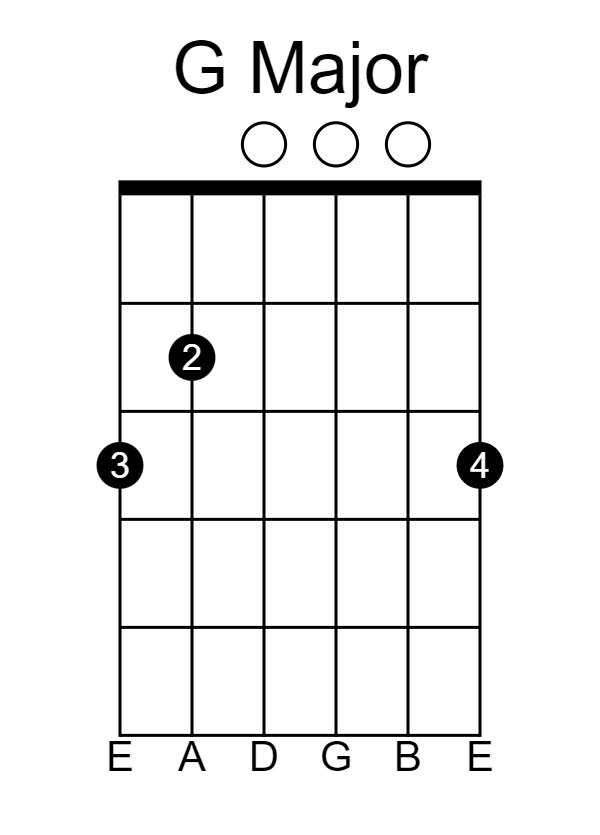
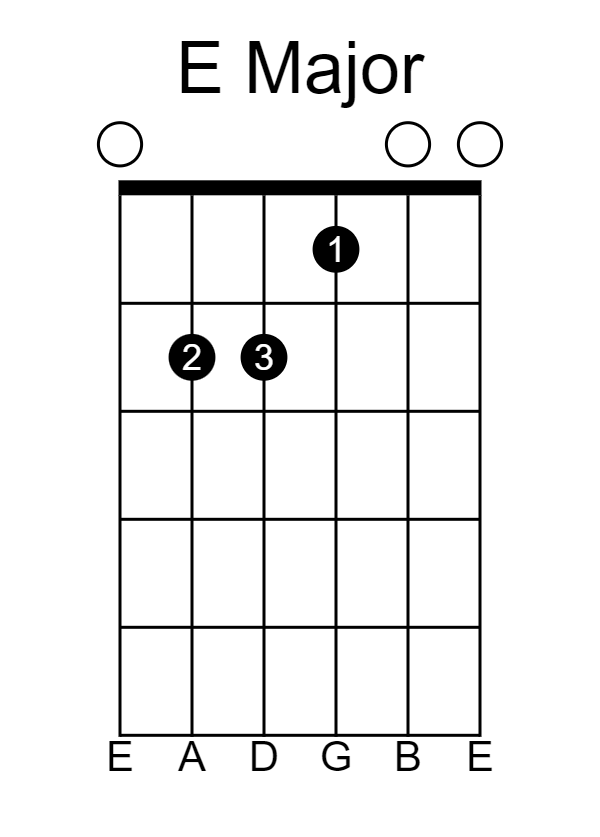
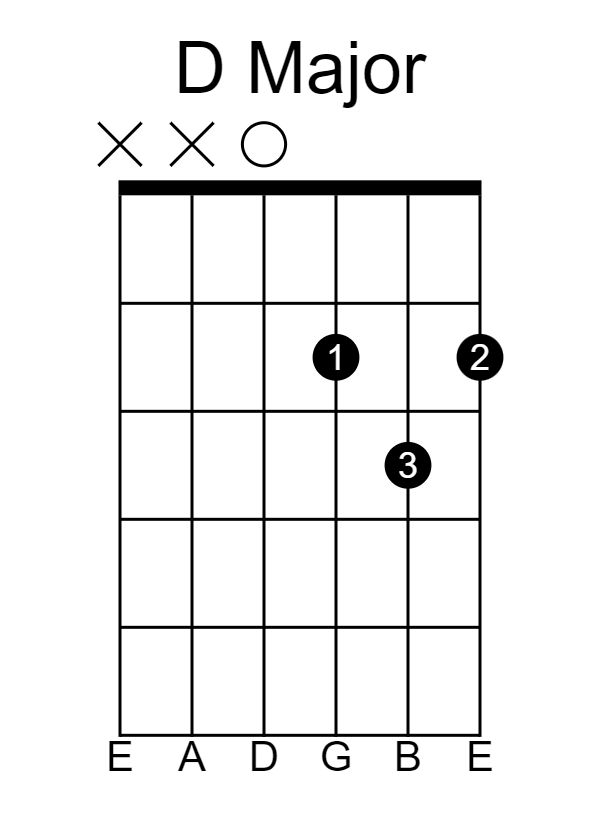
Open Minor CAGED Chords
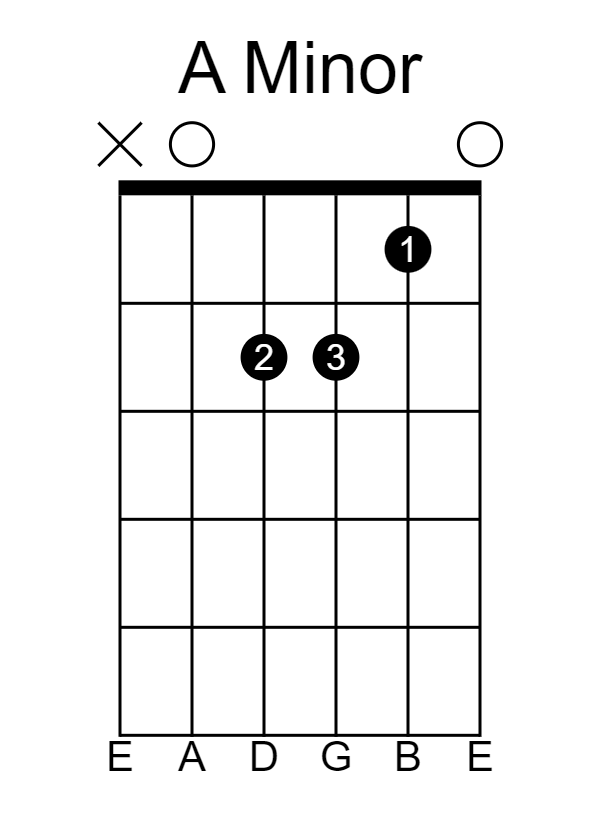


Looking at CAGED Arpeggio Shapes and Intervals
Now you’re going to look at how the CAGED arpeggio shapes are laid out.
There are 5 Major CAGED shapes, and 3 Minor Shapes.
In this case the chords all use G as their root.
I added the interval name/number for each note to help you visualize and understand major and minor guitar arpeggios even better.
The chart title tells you which CAGED shape the arpeggio is derived from, and the parentheses tell you the name of the chord being played with that shape.
Remember, all of these shapes can be transposed, which means you can move them to a new root position. The CAGED shape from which the arpeggio is derived from will remain the same, though.
C Major CAGED Shape
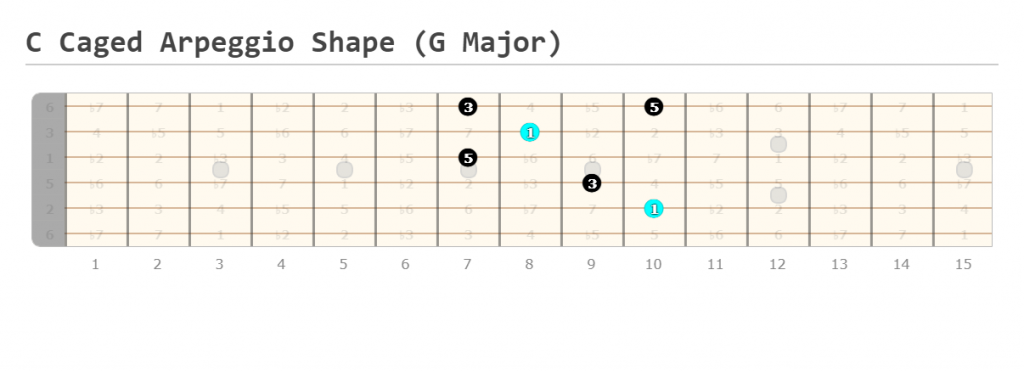
A Major CAGED Shape
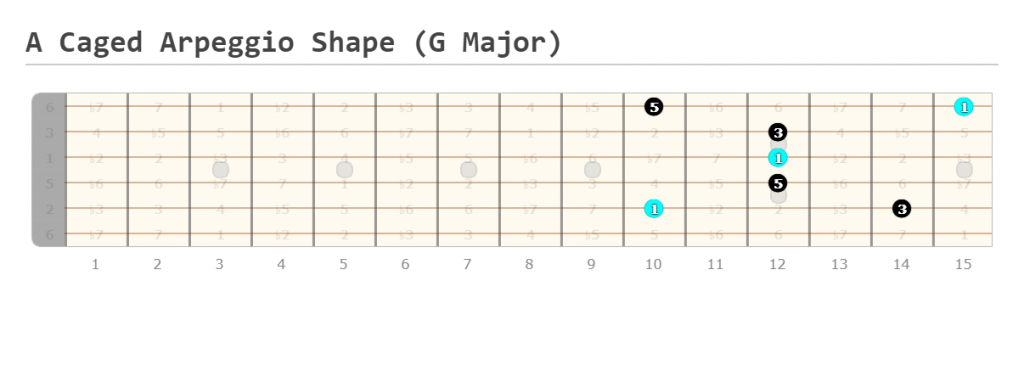
A Minor CAGED Shape
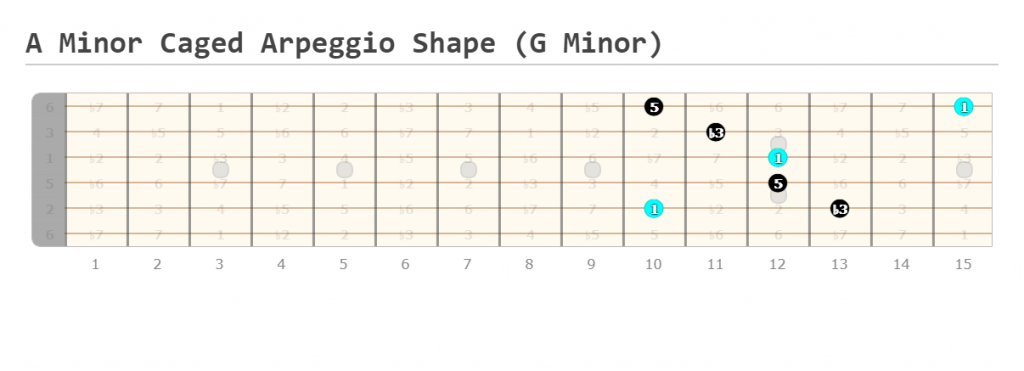
G Major CAGED Shape

E Major CAGED Shape
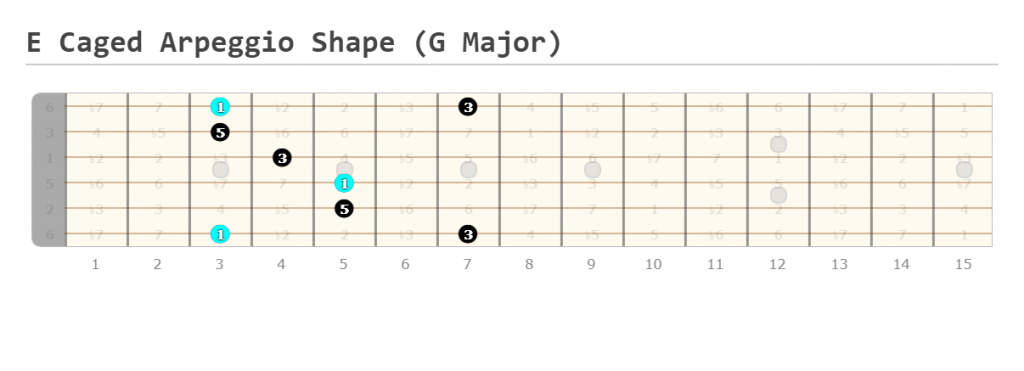
E Minor CAGED Shape

D Major CAGED Shape
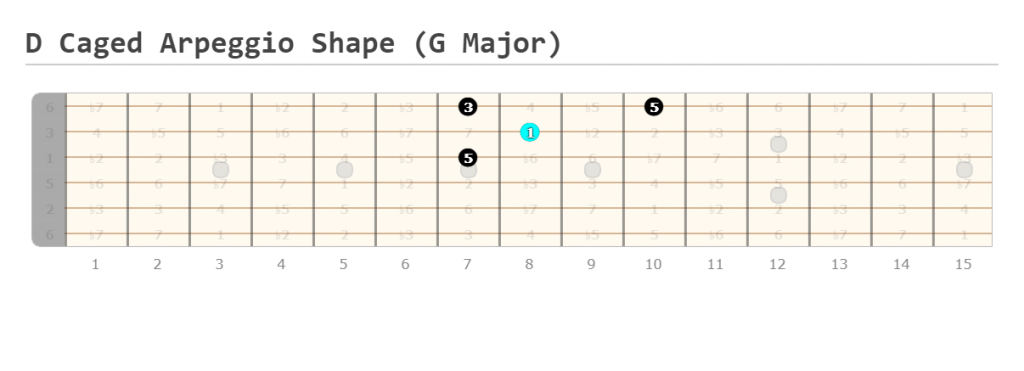
D Minor CAGED Shape
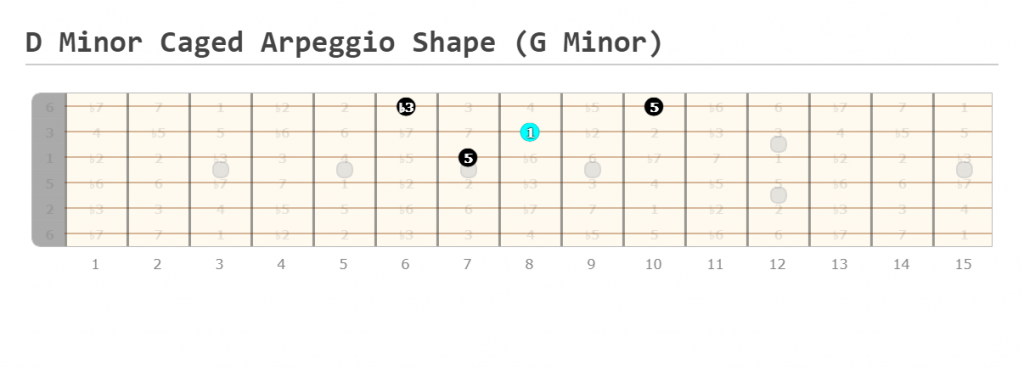
Picking techniques for arpeggios
There are a wide variety of picking techniques used to play arpeggios. Economy/Sweep picking is arguably the most popular of these techniques, especially in rock guitar.
But at the end of the day, the answer really depends!
You may want to play single string arpeggios with tapping, like Eddie Van Halen. Or you might use hammer-ons and pull-offs if you’re using multiple notes on a single string.
Use whatever picking technique comes easiest to you, or whatever technique complements the music appropriately.
Guitar Arpeggios Summary
Wow, what a ride! Hopefully you learned a thing or two about guitar arpeggios.
Remember to learn an arpeggios on single strings to start, which will help you visualize that particular arpeggio across the whole fretboard.
You can pick out individual shapes from there.
Once you’ve learned some individual shapes, you can dive into technique and musical application. Because remember, arpeggios are no good unless you apply them!
Thanks for reading, and rock on!

